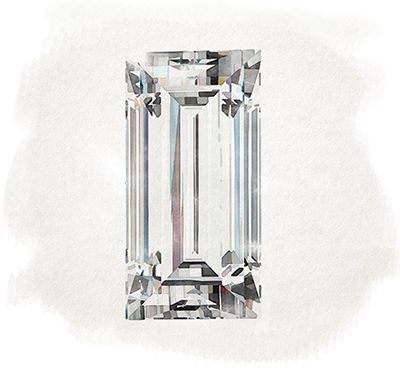
Baguette
bold and modern, yet possessing soothing symmetry
The baguette, which means “wand” or “stick” in French, first became popular during the 1920′s, when the Art Deco movement was emphasizing geometry and balance in aesthetics. Baguette cut diamonds are frequently small diamonds and are most commonly used as shoulder stones (stones that are set alongside larger stones). A baguette typically has 14 facets, which results in a highly reflective, clear stone.
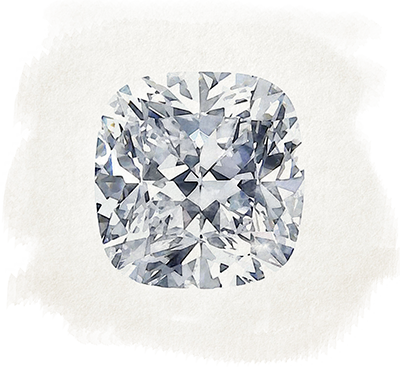
Cushion
beauty that withstands the tests of time
The cushion cut. The brilliant style has been around since the mid-1700’s, it was the most common cut until the early 20th century. Originally designed to retain as much weight from the original crystal as possible, this brilliant cut combines a square cut with rounded corners (much like a cushion). Modern cushion cut diamonds often have better fire than a round brilliant cut diamond. Modern cushion cuts tend to have an extra row of facets on the pavilion and larger tables and improved cut angles for increased brilliance. These modified cuts tend to have a “crushed ice” or needle like facet pattern, more similar to a radiant cut than a traditional cushion cut.
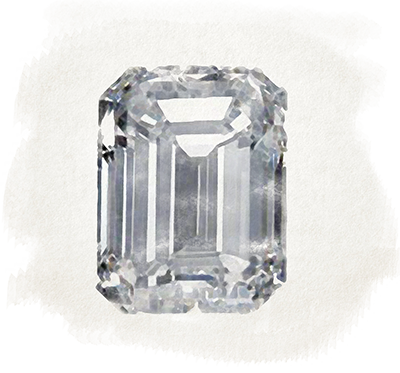
Emerald
a classic shape with universal appeal
An octagonal shaped diamond, the emerald cut was designed to highlight the qualities of emeralds. Emerald cut diamonds are generally rectangular or square in shape. They are step cut diamonds with rows of facets creating a staircase effect. Like baguette cut diamonds, emerald cuts are very clear and can easily reveal inclusions within the stone.

Heart
a popular symbol of love and passion
The heart shape diamonds are a modified brilliant cut, typically made up of 59 facets. The light reflected from a heart shaped diamond tends to radiate from the centre of the stone. A skilled cutter creates the heart shape, always keeping an eye on the heart’s balance and symmetry. This shape is ideal as a pendant and is very popular around Valentine’s Day.
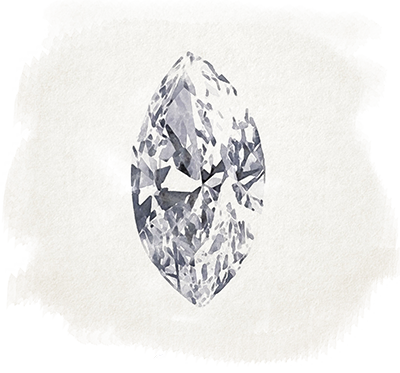
Marquise
legendary elegance and sophistication
The marquise shape was named in 1745 for the Marquise de Pompadour, mistress of Louis XV of France. The long and narrow shape, said to resemble the shape of the Marquise’s mouth, creates an illusion that the diamond is of greater size. The Marquise cut is a modified round brilliant cut meaning this particular diamond cut is an elongated version of the round brilliant cut. The Marquise cut diamond is boat shaped with two pointed ends. There are no standard proportions for the marquise cut diamonds, however if not cut precisely, the diamond may sometimes appear darker in the center. This is known as a ‘bow tie’ effect. Our Marquise cut diamonds are always cut to ensure maximum brilliance.
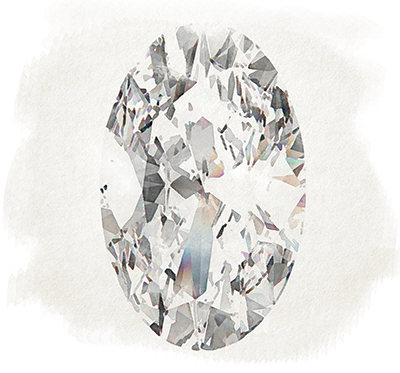
Oval
a strong, classic shape right out of history
The oval shape has probably the longest known history, with the first mention of an oval shaped diamond occurring in 1304: the famous Koh-I-Noor, which now resides in the Tower of London. One of the most notable oval brilliant cut diamonds is the 184 carat Victoria, which was cut in 1887. The oval brilliant was popularized and modernized in the 1960′s. The shape of an oval cut diamond can vary slightly from a squarish oval to a long thin oval. The ends of an oval cut diamond should be rounded and never flat. Oval cut diamonds are very popular for long slender fingers as they can accentuate length. The oval cut diamond is a modified brilliant cut diamond also with 58 facets.
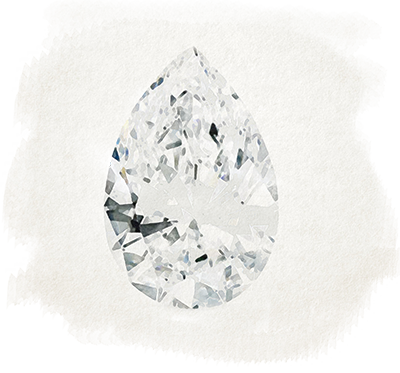
Pear
timeless & classic elegance
The pear shapes trace their history to the 1400’s, with the brilliant style being added in the 1700’s. The pear shaped diamond is also a modified round brilliant cut diamond. Pear shaped diamonds may be quite thin or appear quite wide. Pear shaped diamonds are cut with rounded shoulders leading to a point. As with the marquise cut diamond, if not cut well is also prone to the bow tie effect. Pear shaped diamonds are popular in earrings and engagement rings.
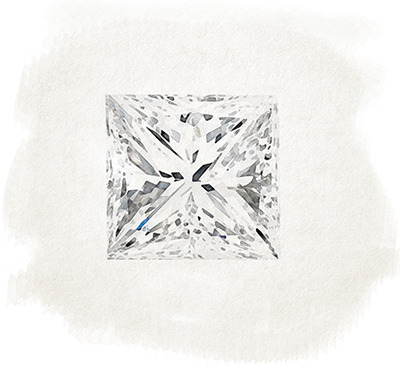
Princess
the modern classic, celebrated for its brilliance
Square shaped diamonds include the princess cut. These cutting styles were created in the 1980′s and are also very popular cuts for engagement rings. The princess cut diamond is typically cut perfectly square but is often slightly rectangular. The princess cut diamond has an average of 76 facets, positioned perfectly to ensure maximum reflection. This is one of the most popular fancy shaped diamonds.
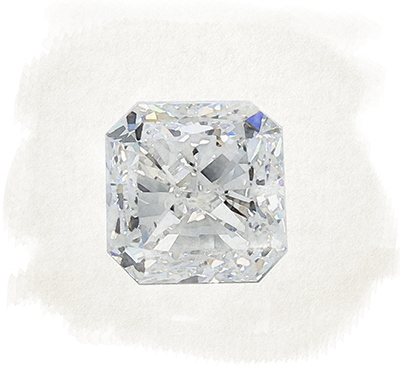
Radiant
spirited sparkle with hidden depths
The radiant cut is another square or rectangle cut that was perfected in the 1970’s, these create vibrant and fiery diamonds, ideal as a center-stone surrounded by smaller diamonds.

Round
quality and brilliance never go out of fashion
Round brilliant cut diamonds are the most brilliant of all the diamond cuts. The shape is the most popular, often used as a solitaire in engagement rings, earrings, or pendants. It’s estimated that 75% of all diamonds sold are round-shaped and according to research by The Knot, 53% of engagement ring center stones are round. The cutting style known as the round brilliant has been around since the 1700’s, but has been modified over the years. The cut has 57-58 facets, which are proportioned to the exact measurements to allow maximum diamond refraction. This means the diamond will reflect light from any direction. The brilliant cut diamond has been the basis for many other diamond cuts as shown below. The round brilliant cut diamond is used in all types of Jewellery including engagement rings and wedding bands.

Triangle
bold and striking
For a daring, bold and rare diamond cut, the trilliant is an original way to make a statement! Fiery and Brilliant, when well cut these diamonds are sure to draw attention for their edgy attitude and symmetrical splendor.